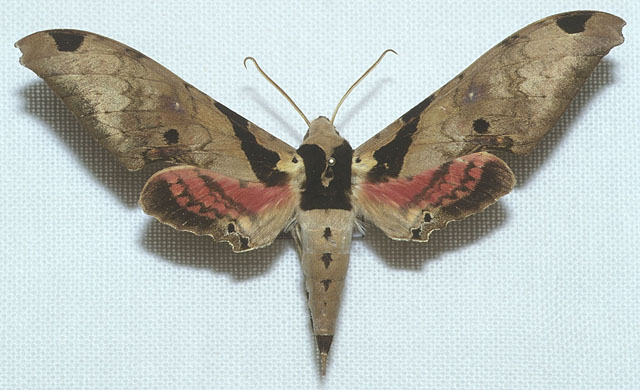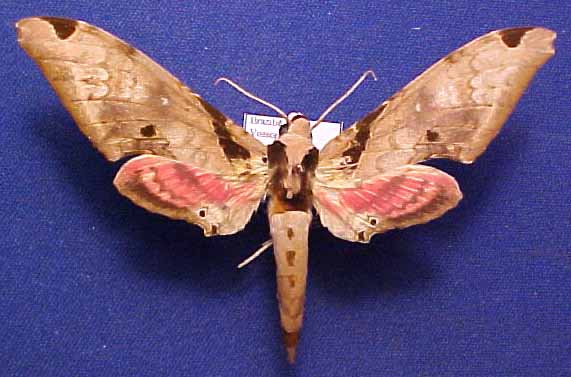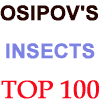Adhemarius eurysthenes
|
|
Updated as per personal communication with Andres Oscar Contreras (Neembucu, Paraguay); May 2009
|
Adhemarius eurysthenes
ad-heh-MAHRR-ee-usmm
yoo-RIH-sthen-ees
(R. Felder, [1874])
Ambulyx

Adhemarius eurysthenes male
courtesy of Hubert Mayer copyright.
This site has been created by
Bill Oehlke at oehlkew@islandtelecom.com
Comments, suggestions and/or additional information are welcomed by Bill.
| TAXONOMY:
Superfamily: Sphingoidea, Dyar, 1902
Family: Sphingidae, Latreille, 1802
Subfamily: Sphinginae, Latreille, 1802
Tribe: Smerinthini, Grote & Robinson, 1865
Genus: Adhemarius, Oiticica, 1939
Species: eurysthenes, (R. Felder, [1874]) |
MIDI MUSIC
"What.A.Wonderful.World"
copyright C. Odenkirk
MIDI CITY
ON.OFF
<bgsound src="world.mid" LOOP=FOREVER>
|
DISTRIBUTION:
The Adhemarius eurysthenes moth
flies in
Colombia ?;
Brazil: (Minas Gerais, Rio de Janeiro,
Parana (ALBCOL)); and in
Paraguay: (Concepcion, San Pedro (UD)); (Neembucu (AOC)).
FLIGHT TIMES AND PREFERRED FOOD PLANTS:
Adhemarius
eurysthenes probably produces at least two broods annually with peak
flights in February and July-August.
Adhemarius eurysthenes larvae probably feed upon
Ocotea veraguensis, Ocotea atirrensis
and Ocotea dendrodaphne and Persea species.

Adhemarius eurysthenes
courtesy of John Vriesi.
ECLOSION, SCENTING AND MATING:
EGGS, LARVAE AND PUPAE:
Larval Food Plants
Listed below are primary food plant(s) and alternate food plants. It is hoped that this
alphabetical listing followed by the common name of the foodplant will
prove useful. The list is not exhaustive. Experimenting with closely
related foodplants is worthwhile.
Return to Smerinthini Tribe
Return to Mani Sphingidae Index
Use your browser "Back" button to return to the previous page.
This page is brought to you by
Bill Oehlke and the
WLSS. Pages are on space rented from Bizland. If you would like
to become a "Patron of the Sphingidae Site", contact Bill.
Please send sightings/images to Bill. I will do my best to respond to
requests for identification help.
Enjoy one of nature's wonderments: Live
Saturniidae (Giant Silkmoth) cocoons.
 | 
Show appreciation for this site by clicking on flashing butterfly to the left.
The link will take you to a page with links to many insect sites. |



